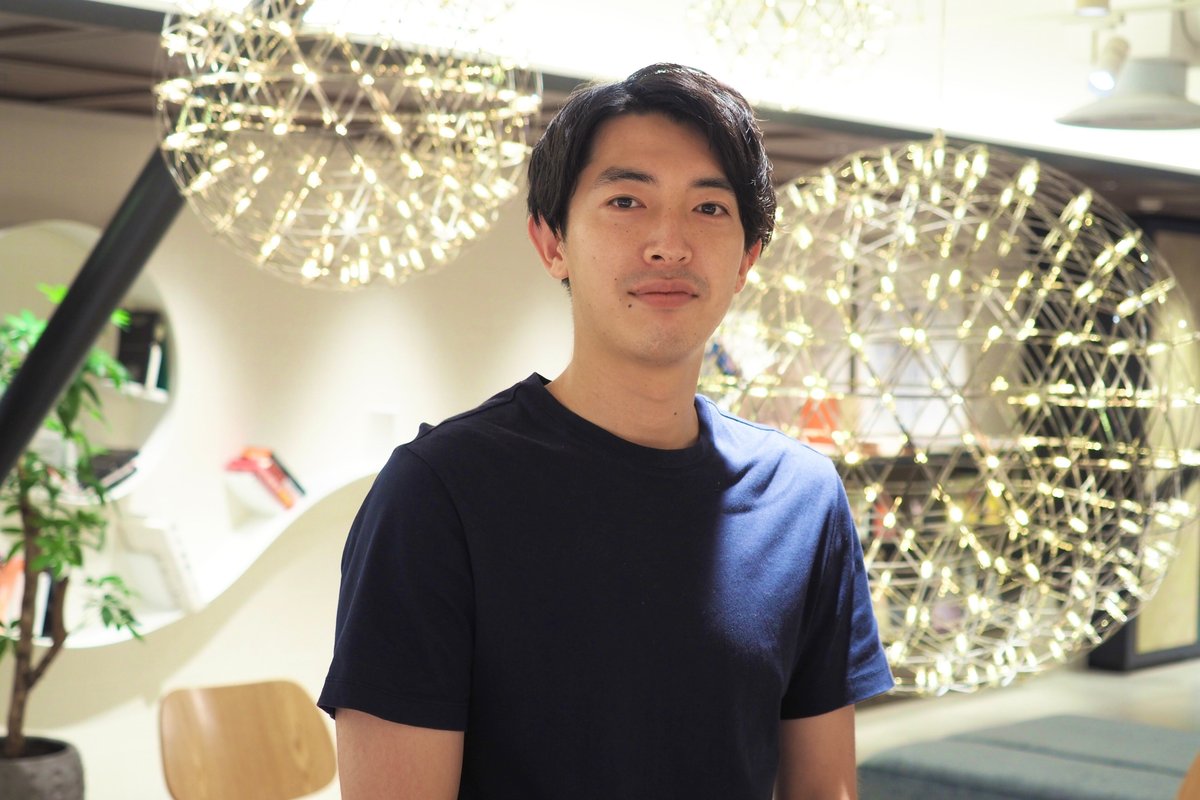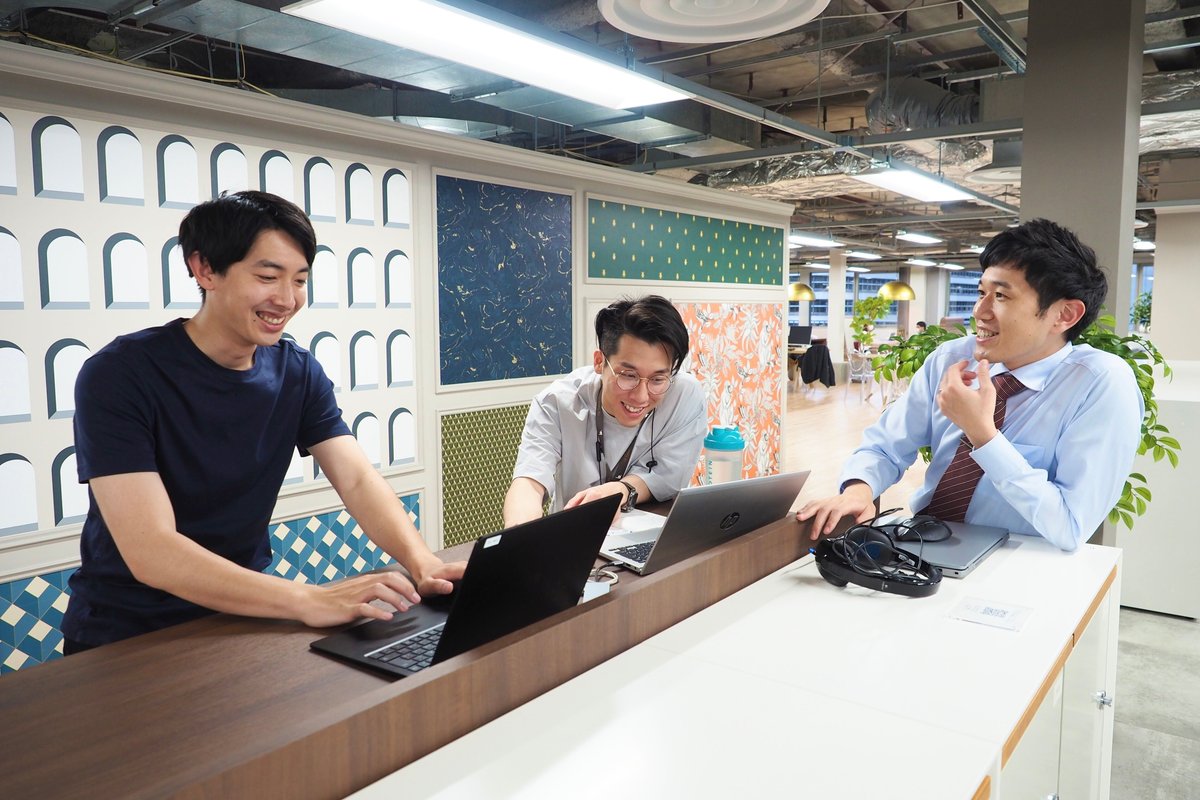
【A Day at beBit】Consultant | Junior
“A Day at beBit” is a series that introduces the daily work life of employees of each occupation.
For this installment, we would like to introduce the daily work schedule of one of our consultants, Okada-san!

【Okada-san’s Profile】
●Department and Position:UX Human Resource Development - Consultant
【Job Introduction】
In order to achieve the department’s mission of “realizing internal and external journeys in order to develop a free and prosperous UX society and create results,” the UX Human Resource Development team works to “develop ※UCD talents.”
I am currently working on several projects, including short-term UX design projects and long-term UX growth projects. I recognize this time as a period for me to build my basic skills as a UX Designer.
My goal within this process is to first verbalize “what UX design is” to me. As I originally did not have any expertise in design, I must first be able to form a clear image of what UX design is in order to be able to contribute value.
While I am still inexperienced, I have recently started to feel that “UX design is a job that materializes respect towards the user. Those who take pride in delivering the materialized product to users are UX Designers.”
※UCD: User Centered Design
・ ・ ・
【Daily Schedule】
8:00 Commute
During my commute by train, I typically gather information through reading and checking online news outlets.
9:00 Arrive at the office / List up tasks and necessary communications
After arriving, I first work on communication related todos such as responding to Slack and emails, then work on tasks that don’t require a lot of brain power. From there, I gradually get my brain going.

10:00 Design interviews
Our job is to identify necessary improvements in services provided by our clients and present a plausible solution.
In order to do so, we conduct user interviews to identify the difficulties that users experience in the current service, in addition to why the difficulties occur.
Users themselves are often unaware of what they desire, so we, the UX Designers, must thoroughly observe their behaviors and reveal objective insights.
During the “interview design” process, we figure out which of the hypotheses we must prioritize and “experience design” the interview itself.
We heavily focus on whether the flow of the interview is natural for the user, and whether the interview process can reveal what is necessary or not.
11:30 Team meetings with my manager
Our projects are typically run by a consultant and a manager.
As the consultant (me) develops the plans, any questions or issues are resolved during the daily meetings with the managers.
Thanks to these meetings, my ability to design client meetings improves, and I am able to feel growth every day.
12:00 Lunch with colleagues
A colleague who joined beBit at the same time as me was also at the office, so we decided to go to lunch together.
When going out with colleagues, we usually end up talking about both our work and personal lives. A particularly exciting topic is content such as anime, dramas, and movies. On this day, we passionately (and a bit subjectively) discussed why “SPY X FAMILY” is such a popular series.

13:00 Updating interview designs and confirming progress
I take this time to incorporate the feedback I received from my manager in the morning.
Then, when I am finished incorporating the feedback, I do another self-review of the entire interview process.
I review to ensure that the flow is natural and to ensure that we can verify what is necessary through questions and observations without wasting time. If necessary, I make revisions during this time as well.
14:00 Conduct user interviews
The interview I am working on today is for a video streaming service. The purpose of this project is to clarify how users utilize this service throughout their daily lives.
A typical interview is conducted in a question-and-answer format with “the statement itself” as the goal. In a user interview, we want to figure out “the background behind the statements and actions.”
The “why?” to each response is considered repeatedly in order to determine the situation in which the user cannot help but think or act. I believe this is what a user interview is.
It’s like a very serious 60 minute match! Of course, my opponent is not the user, but myself (haha).
15:00 Update the prototypes
In user interviews, we do not only ask users how they utilize a service. There are also times that we ask them to use a prototype of the service to see how they react.
In order to maximize the interviewees input and prepare a better prototype for the next day’s interview, I use this time to update the improvements discovered that day.
Prototyping is a repetitive process of experimentation and improvement, so speed is very important. Even so, I am happy when people find an interface I come up with easy to use, and I’m pretty bummed when something I am confident about isn’t used.
Of course, the latter example is much more common, but I think about why it didn’t resonate with the user and utilize that knowledge the next time around.
17:00 Study sessions
Once a week, we have a 60 minute study session set up.
The senior consultants give us a theme, and during the early stages, we learn the basics of UX and UI.
A recent example of a task we were given was to “design a bank’s website to make it easier to view and use.” I created and fixed a website over the course of a month, and with the help of the senior consultants, was finally able to settle on a website I was satisfied with.
One of the great things about my job as a UX Design Consultant is that I get to learn about diverse industries and the people involved in them through not only projects, but through opportunities like the study sessions as well.

18:00 Checking the following day’s to-do and leaving work
Before leaving work, I reflect on what I was able to do/not able to do and organize my to-dos for the following day.
18:30 Exercise
I try to make sure to exercise a few times a week.
I recently started playing a sport I used to play in college again called Ultimate Frisbee.
I also play futsal, baseball, tennis, and badminton with members of the company as well.
As being active is one of my better traits, I feel very comfortable in the environment I am in.
21:00 Get home, relax, and go to bed
Recently, I have been watching dramas and anime on streaming services.
While enjoying the content, I am often distracted by the UX and UI of the screen. I take this as a positive sign that I am gaining awareness as a UX designer.
I try to make sure to read before going to sleep. The book I am currently reading is a book called 『映画を早送りで観る人たち』(rough translation: “People who Fast-Forward Through Movies”), recommended by our CCO Fujii-san.
The sleepiness gets to me after about 30 minutes to an hour, which is when I close my book, pat myself on the back (figuratively) for getting through the day, and go to sleep.
・ ・ ・
【What Makes my Job Worthwhile】
It is rewarding to be able to say with confidence that my current work is making a difference in people’s lives.
In addition, I feel that the consulting service that allows us to support our clients so that they will eventually be able to make their own user centered improvements is very rewarding as well.
While UX design is becoming more important throughout the world, there are parts that are not always clear from a corporate perspective.
When I work with clients to rid them of their negative perception and reach the moment when they are convinced about what UX design can do, I feel that I have contributed to the happiness of both the client and the users beyond them.
・ ・ ・
※Masks were removed only while the photos were taken
